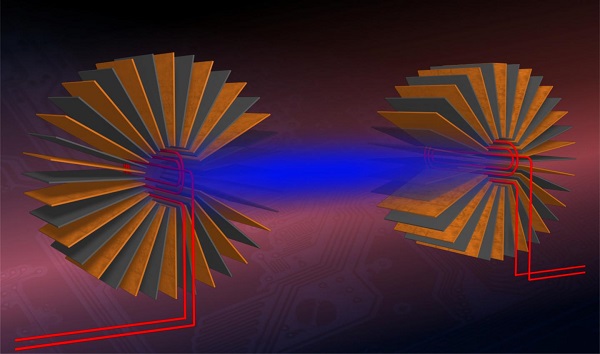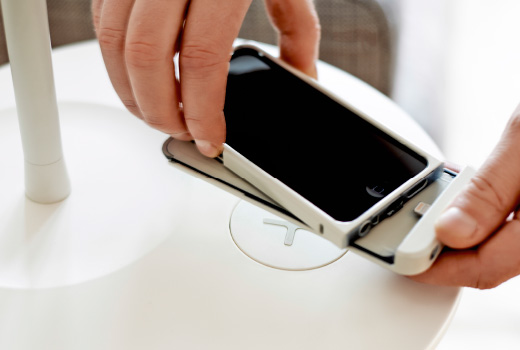Researchers from the Department of Physics of Universitat Autònoma de Barcelona (UAB) have created a metamaterial-based system that can more efficiently transfer electrical energy between two separated electrical circuits.
Should the technology prove scalable (it’s still in the experimental stage), it will be able to charge mobile devices at a longer distance than anything currently possible.

Today’s wireless charging technologies are a bit limited in that induction is used to charge them sans wire. Specifically, a special case is applied to the device, and the pairing is placed atop a charging base connected to an electrical socket. (NOTE: This is for most of the devices on the market right now that do not have wireless charging support built-in).

Placing the device atop the base generates a magnetic field which, in turn, induces an electric current inside the case. This results in the device becoming charged, without there needing to be any sort of cable hook-up.
Worth noting — the device cannot be charged sans case. The energy doesn’t transfer efficiently enough, and so the battery cannot be charged.
The UAB team created a system that overcomes a lot of these issues, and they did this by incorporating metamaterials that combine layers of ferromagnetic materials (e.g. iron compounds) and conductor materials (e.g. copper). By enveloping the emitter and receiver with these materials, the team was able to transfer energy between electrical circuits at a greater distance and with a significantly high rate of efficiency than ever before —35-fold, as a matter of fact, “and there is much more room for improvement, since theoretically the efficiency can be increased even more if conditions and the design of the experiment are perfected” explains Àlvar Sánchez, director of the research.
“Enveloping the two circuits with metamaterial shells has the same effect as bringing them close together; it's as if the space between them literally disappears”, states Jordi Prat, lead author of the paper.
Worth noting is that the materials used to construct these metamaterial crowns — copper, ferrite, among others — are all easily available. Also, the low frequency electromagnetic waves used in the experiments only need conventional conductors and ferromagnetics to work – no exotic (and expensive) technologies necessary.
To learn more, download the report from Advanced Materials.
Advertisement
Learn more about Electronic Products Magazine





